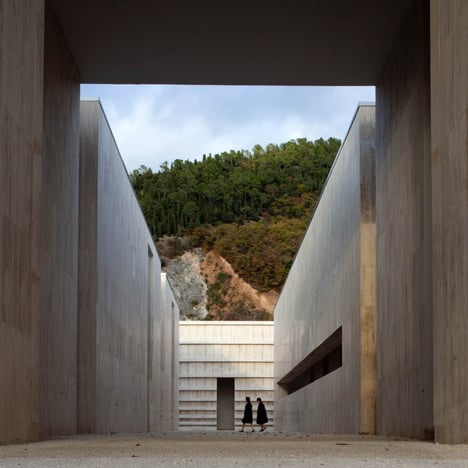
The Dezeen guide to contemporary cemeteries
Halloween is traditionally a day for honouring the dead, so today we're revisiting some of the best cemetery, mausoleum and crematorium architecture on Dezeen.
The roots of Halloween, or All Hallows' Eve, is thought to have originated from a Celtic festival dedicated to marking the beginning of winter and the end of the annual crop cycle. The day was believed to be the moment when the souls of the dead would travel to the underworld, weakening the barriers between the living and the dead.
In the modern Christian calendar it precedes All Saints Day, a day dedicated to honouring all of the dead saints. Other cultures also celebrate a day of the dead at this time of year, with cemeteries often at the heart of the celebrations and activities.
Although Christian cultures once buried their dead in the grounds of their parish church, changing attitudes in the 18th century – compounded by the population explosion in cities in the 19th century brought about by the industrial revolution and subsequent overcrowding – led to the creation of the designated burial areas we are more familiar with today.
These cemeteries became a focus for a new kind of monumental memorial architecture. This was particularly evident in areas of the world under the influence of the British Empire, whose architects indulged in creating highly decorative structures and covering graves and mausoleums with sculptures and carvings.
This was scaled back over the course of the 20th century, as memorial buildings reflected wider architectural trends. The construction of new cemeteries became less common and crematoria more popular as land grew in value and attitudes towards burial began to change.
Today's contemporary cemetery structures and crematoria of note are usually built in a minimal or Modernist style, generally featuring exposed raw materials like brick, concrete stone or marble. Walls are often whitewashed and decorative elements are rare.
Here are 10 of the best examples from the pages of Dezeen:

Italian architect Andrea Dragoni extended a cemetery in Gubbio by adding rows of monumental travertine walls laid out in a sequence intended to reflect the linear arrangement of the ancient Italian town at the base of Mount Igino in the Appenines.
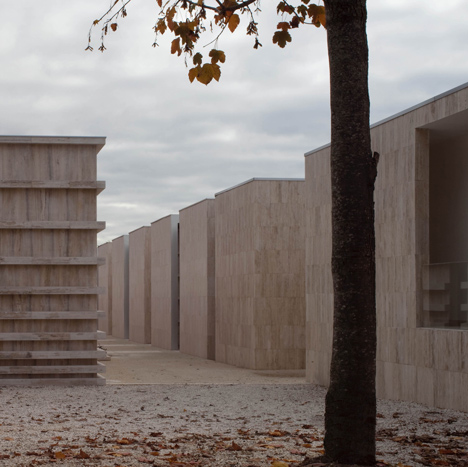
Public plazas and artworks are slotted in between the towering stone walls. "I wanted to reinterpret the material to emphasise the gravity of the volumes of the cemetery and their strong abstraction," said Dragoni. Find out more about this project »
Gomes family mausoleum, Portugal, by Armazenar Ideias
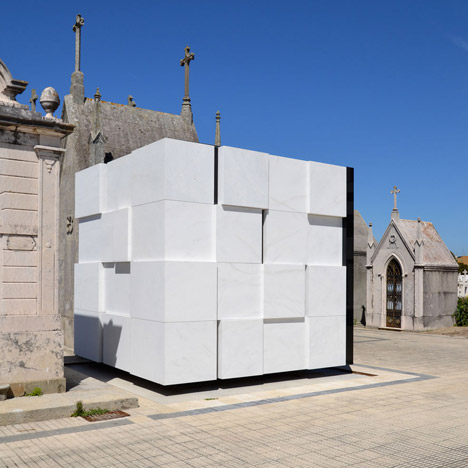
Traditional mausoleum structures in Portugal are decorative, but Pedro Matos of Armazenar Ideias wanted to design a more modern and simplistic vault for the Gomes family, using blocks of white marble to build this cube-shaped structure for the in the city of Póvoa de Varzim

"There are different values to be represented in architecture now," Matos told Dezeen. "Not so much the old solemnity and 'baroque thinking' associated to death, but a much more simple and essential way to interpret it, detached from the excess of symbolism." Find out more about this project »
Sunset Chapel, Mexico, by Bunker Arquitectura
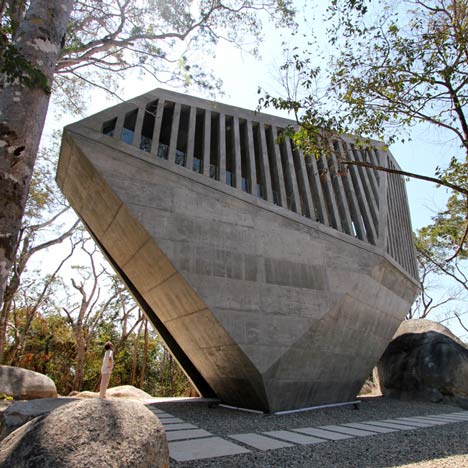
This boulder-shaped concrete building is a mourning chapel in Acapulco, Mexico, with crypts arranged around its perimeter. The chapel space is raised five metres above the ground to avoid needing to move large rocks on the site and is accessed via a set of internal steps.
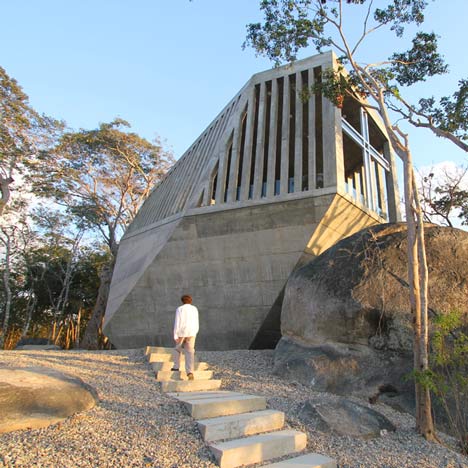
"Acapulco's hills are made up of huge granite rocks piled on top of each other," said the architects. "In a purely mimetic endeavour, we worked hard to make the chapel look like 'just another' colossal boulder atop the mountain." Find out more about this project »
New Funeral Home, Spain, by Batlle i Roig Arquitectes
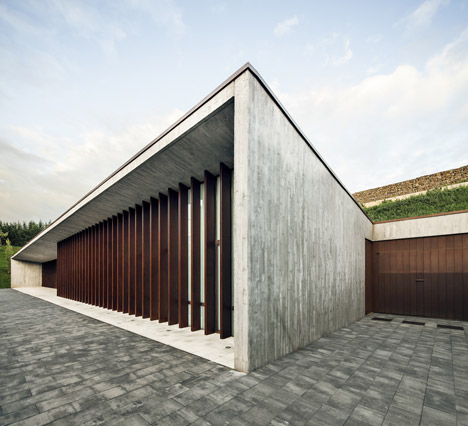
Located to the west of Barcelona in the town of Sant Joan Despí, this concrete funeral home is embedded into a hillside site with a sloping grass roof that pitches back up at the front to frame a long, narrow facade. Corten steel columns alternate with floor-to-ceiling glass to create stripes of light and shadow.
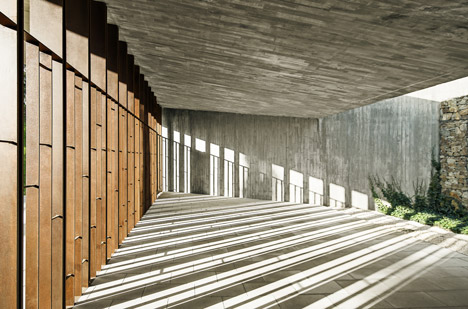
"The materiality generated by the assortment of exposed structural element textures together with the natural light qualify and determine the atmospheres of each space, accompanying the visitors' mourning at every turn," said the architects. Find out more about this project »
Funeral Chapel in Ingelheim Frei-Weinheim, Germany, by Bayer & Strobel Architekten
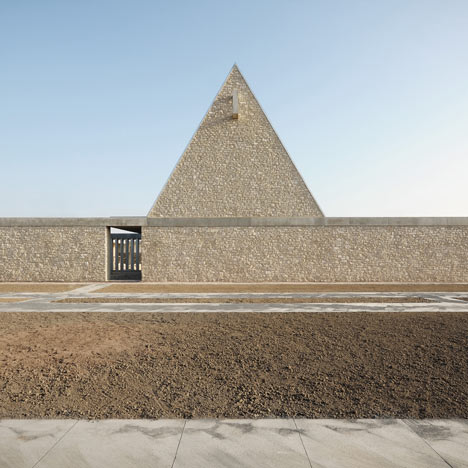
The sharply angled gable of this chapel in a small German town creates a double-height funeral hall lit by a long narrow skylight, with glass walls framing two private courtyards and stone walls to "block off" the cemetery from the street.
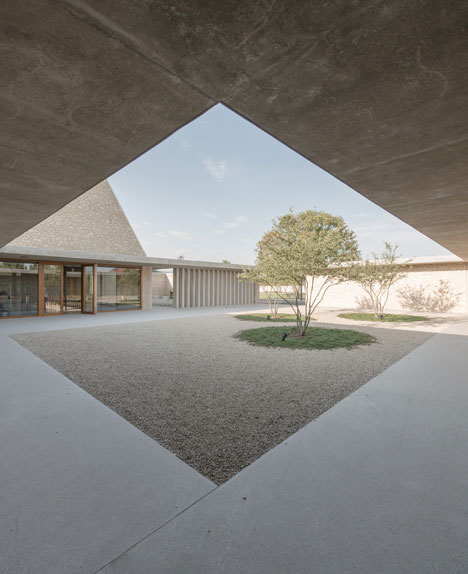
"To do justice to its significance within the cemetery complex, the funeral is clearly marked with a gabled roof," said architect Peter Strobel. "This creates an interior that feels dignified and solemn as well as simple and appropriate to its purpose." Find out more about this project »
New Crematorium at Woodland Cemetery, Sweden, by Johan Celsing
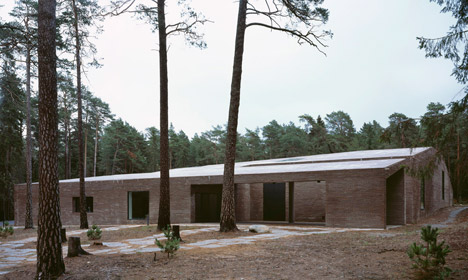
Johan Celsing Arkitektkontor's red brick design won a competition run by the city of Stockholm to create a new crematorium building inside the Woodland Cemetery originally designed by Swedish architect Eric Gunnar Asplund.
The new building sits in a clearing 150 metres from Asplund's 1940s chapel, which can't be modernised without making major changes to the protected structure.
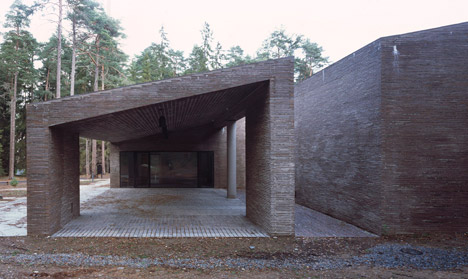
Celsing's building follows the curve of the terrain, sloping gently from its edges to a mound in the middle to make minimal impact on the woodland. Find out more about this project »
Chapel of St. Lawrence, Finland, by Avanto Architects
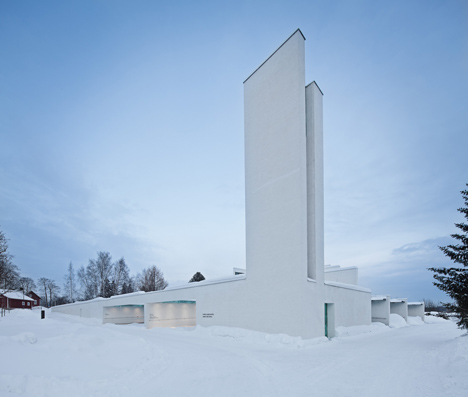
Avanto Architects designed this funeral chapel in Vantaa to last for 200 years, selecting hard-wearing materials that would develop character over time. The steel and concrete structure is topped with a copper roof, which includes a continuous skylight that follows the route of a visitor attending a funeral, through the building to the graveyard of the older adjacent church.
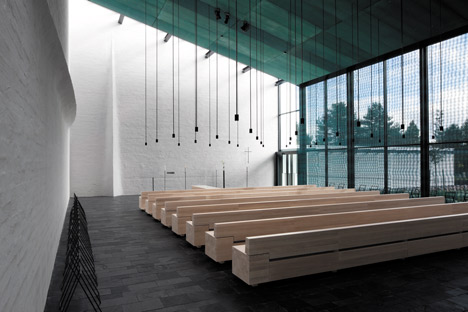
"The chapel's architecture is a depiction of the passage of a Christian soul from here to the hereafter," said the architects. "The whitewashed masonry walls and a continuous skylight next to it lead from one space to the next, from the low and dark to the lofty and light." Find out more about this project »
Family Tomb, Portugal, by Pedro Dias
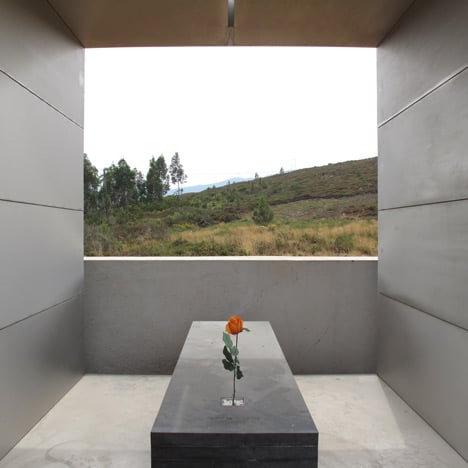
Lined with stainless steel panels, this pre-fabricated family tomb occupies a plot inside a cemetery on a mountainside in Arganil and is clad in softened black granite. It has capacity for eight coffins, with the central plinth used to support coffins during ceremonies and offer a seat with views over the surrounding landscape. A cruciform aperture is cut into the roof.

"The concept behind this small, rather unusual but challenging project was the creation of a simple, restrained and minimalistic architectural object that would interact directly with the impressive landscape by literally framing it," explained Dias. Find out more about this project »
Crematorium in Kėdainiai, Lithuania, by Architektu Biuras G.Natkevicius ir Partneriai
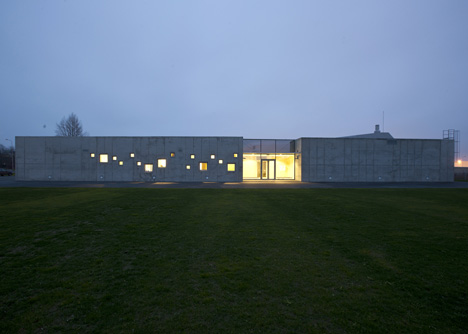
Located on an industrial site, the fortress-like concrete walls of this crematorium – one of the first public buildings of its kind in Lithuania – are punctuated by dozens of square windows that are scattered across the facade.
A cluster of windows reveals the location of a private courtyard behind the perimeter wall, which also parts in two places to create entrances.
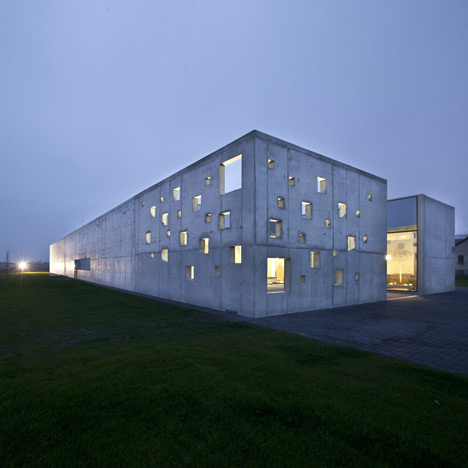
"To make a path for the first crematorium in Lithuania wasn’t easy," said the architects. "In order to distance itself from the industrial environment the building was designed closed like a human introvert." Find out more about this project »
Islamic Cemetery, Austria, by Bernardo Bader Architects
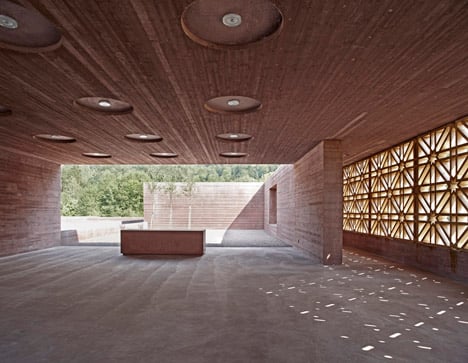
Bernardo Bader Architects used exposed red-tinted concrete for the main structure of this prayer building at an Islamic cemetery in the countryside of the Austrian state of Vorarlberg, which opens out onto a series of staggered graveyards.
The simple rectilinear building features a long rectangular window across one facade, screened by a latticed oak framework that displays one of the traditional patterns of Islamic mashrabiya screens.
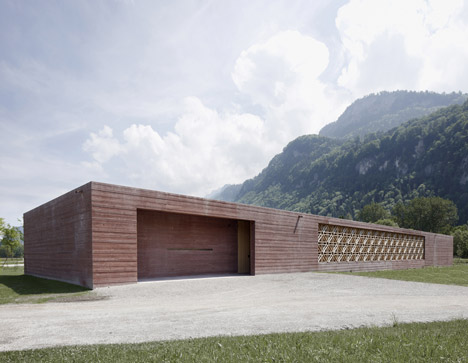
The five rectangular graveyards are lined up at the back of the building. Each one contains several trees, benches and small patches of grass. Find out more about this project »